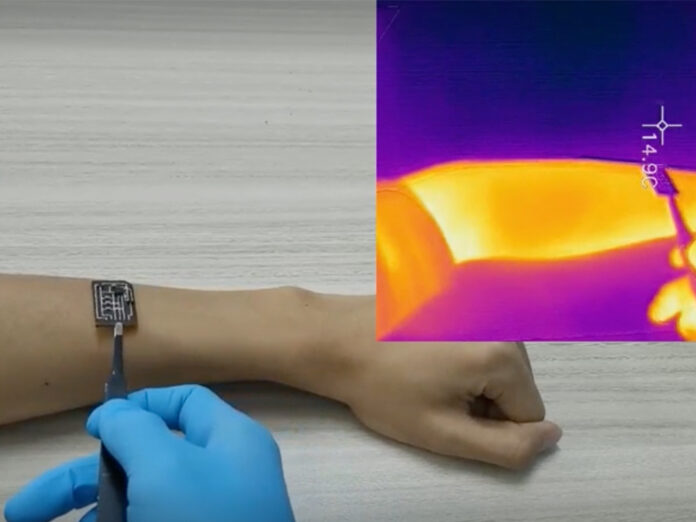Sarah Small’s article, “Improved, Self-Healing Medical Sensor Responds to Temperature, Adapts to Skin,” highlights a new development in wearable medical sensors at Penn State University. Led by Hyanyu “Larry” Cheng, this research focuses on creating sensors that can change from rigid to soft and heal themselves.
The main innovation is that these sensors can switch their stiffness based on temperature. Cheng explains, “Switching a sensor from rigid to soft can be modulated by a simple temperature switch” (Small, 2023). When the sensor is at body temperature, it becomes soft and fits better on the skin. When it gets cold, it hardens, which helps in displaying information clearly.
Li Yang, a key researcher, adds that when the sensor is soft, it sticks better to the skin, but can be easily removed when it gets cold; “You can apply an ice pack… and it naturally peels off the skin” (Small, 2023). This feature is especially useful for people with sensitive skin, like infants or the elderly.
Another major improvement is the self-healing ability of the sensor. Cheng notes that the sensor can repair itself quickly if it gets damaged; “We can do that in a much faster manner, possibly as fast as five minutes” (Small, 2023). This means the sensor can keep working even if it gets cracks or breaks. This new technology is set to be used in various healthcare settings, making wearable sensors more reliable and easier to use.
Small, S. (2023, April 18). Improved, self-healing medical sensor responds to temperature, adapts to skin: Penn State University. Penn State University. https://www.psu.edu/news/engineering/story/improved-self-healing-medical-sensor-responds-temperature-adapts-skin




